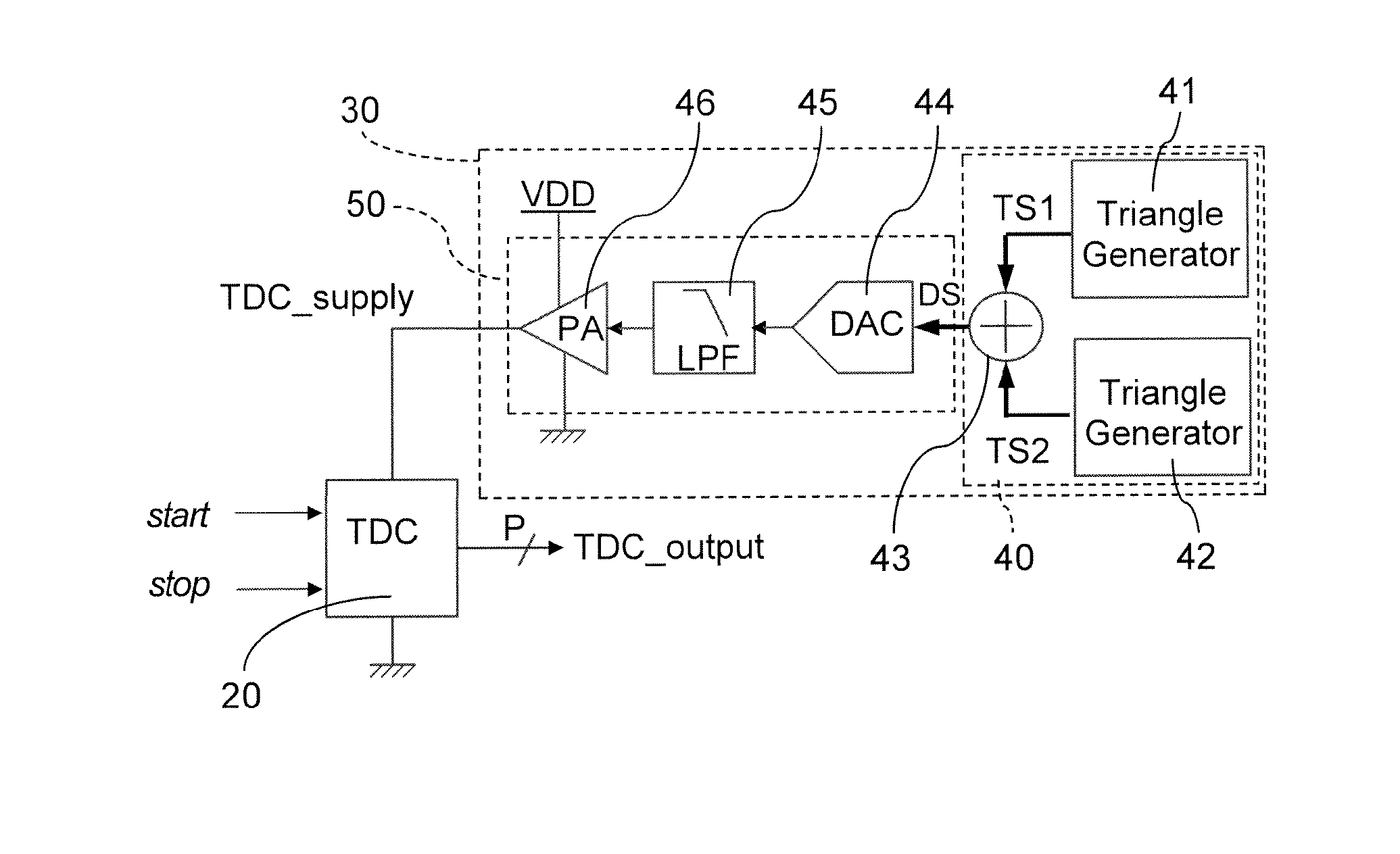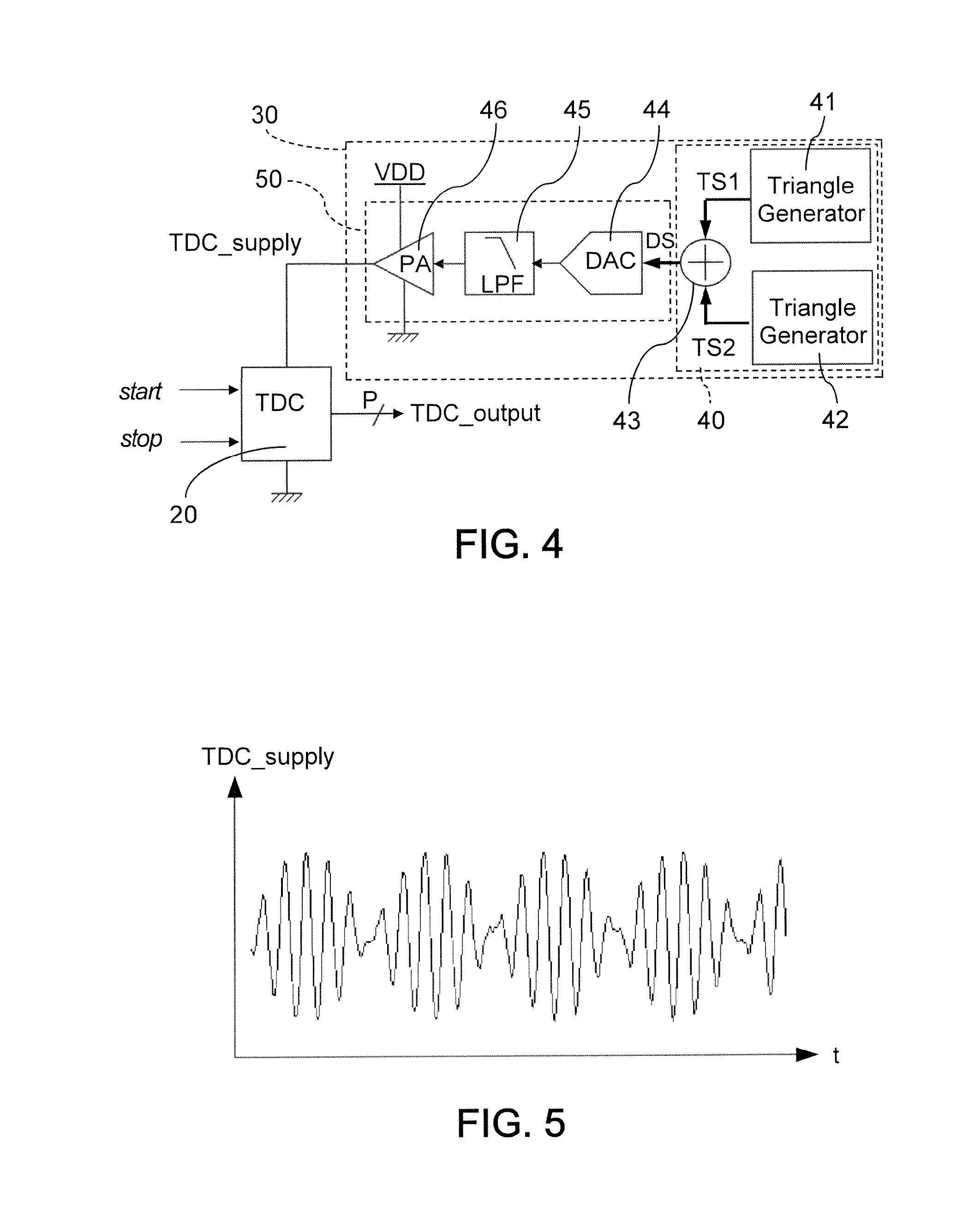Time-to-digital conversion with analog dithering
a technology of analog dithering and time-to-digital conversion, which is applied in the field of phaselocked loop (pll) devices, can solve the problems of high power consumption for the generation and processing of clock signals, measurement errors at the beginning and end of time intervals, and quantization noise can still appear at low frequencies
- Summary
- Abstract
- Description
- Claims
- Application Information
AI Technical Summary
Benefits of technology
Problems solved by technology
Method used
Image
Examples
Embodiment Construction
[0045]Reference will now be made in detail to embodiments, examples of which are illustrated in the accompanying drawings. In the following detailed description, numerous non-limiting specific details are set forth in order to assist in understanding the subject matter presented herein. It will be apparent, however, to one of ordinary skill in the art that various alternatives may be used without departing from the scope of the present invention and the subject matter may be practiced without these specific details.
[0046]Referring to FIG. 2, there is shown therein a schematic circuit diagram of an example of a Time-to-Digital Converter (TDC) 20 to which embodiments of the invention may be applied. The TDC is based on a tapped delay-line structure 21, in which the start signal is fed. The start signal is the signal carrying the time information to be converted.
[0047]The tapped delay-line 21 contains a number Q of delay elements, or cells, each introducing an elementary delay time r. ...
PUM
 Login to View More
Login to View More Abstract
Description
Claims
Application Information
 Login to View More
Login to View More - R&D
- Intellectual Property
- Life Sciences
- Materials
- Tech Scout
- Unparalleled Data Quality
- Higher Quality Content
- 60% Fewer Hallucinations
Browse by: Latest US Patents, China's latest patents, Technical Efficacy Thesaurus, Application Domain, Technology Topic, Popular Technical Reports.
© 2025 PatSnap. All rights reserved.Legal|Privacy policy|Modern Slavery Act Transparency Statement|Sitemap|About US| Contact US: help@patsnap.com



